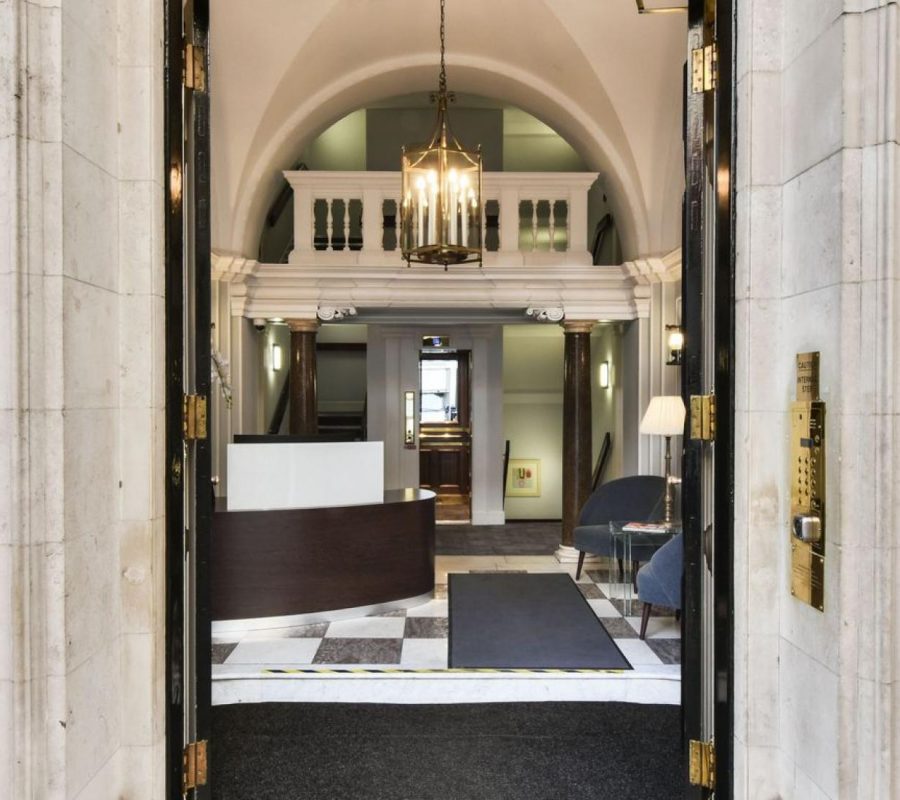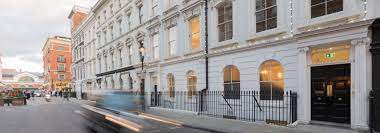Location:Covent Garden
Covent Garden Office Space
Covent Garden office space is chosen by a broad range of businesses and organisations from eclectic sectors, reflecting the district’s diversity.
It sits on the eastern fringes of the West End between St Martin’s Lane and Drury Lane to the north of the Strand. It is not covered by the West End’s W1 postal code but by WC2.
In medieval times, the land belonged to a convent and its garden provided produce for Westminster Abbey. It was referred to as ‘the garden of the Abbey and Convent’, and later ‘the Convent Garden’. Over the centuries, this was corrupted to Covent Garden.
In the 16th century, following Henry VIII’s Dissolution of the Monasteries, the land was granted to John Russell, 1st Earl of Bedford, who commissioned architect Inigo Jones to build fine houses to attract wealthy tenants.
Jones’s design was informed by his knowledge of modern European town planning, particularly the piazzas of Florence, Tuscany, and Venice.
The centrepiece of the project was the large square, a concept new to London, which significantly influenced other estates of the UK capital as the city grew.
Today, Covent Garden is divided by the main thoroughfare of Long Acre, north of which is Neal’s Yard and Seven Dials.
Seven Dials’ distinctive design originated from an ingenious idea by local entrepreneur Thomas Neale in the late 17th century. He had realised that the fine houses around squares attracted the highest rent, so the number of prime residences that could be built was limited. Additionally, at the time, rent was determined by the length of a property’s façade rather than its square footage.
His concept was to build from a central point and radiate out, thus maximising the number of houses with large facades in an area.
By the Victorian era, markets had been set up in Covent Garden, and the wealthy had moved out, leaving the area to deteriorate into a slum, as documented in literature. In Charles Dickens’ Little Dorrit, he references its ‘foul street gutters’ and ‘miserable children in rags’.
An act of Parliament was made to control the area, and it was significantly improved by covering the markets with Charles Fowler’s neo-classical building erected in 1830, followed by the Floral Hall, Charter Market, and in 1904, the Jubilee Market.
The markets became so popular that traffic congestion caused issues for the surrounding area, and so in the 1970s, they moved to another part of London.
The area continued to evolve as an entertainment, shopping, and office space district. In 2025, a foreign sovereign wealth fund purchased a large proportion of Covent Garden’s highly sought-after and valuable commercial real estate.
Covent Garden has long been associated with entertainment. In 1662, it hosted a puppet show that would later become Punch and Judy. The Society for Theatre Research and the British Puppet and Model Theatre Guild erected a memorial to mark the spot in 1962.
The district has tens of pubs and bars, one of which is The Punch and Judy. It is also home to a large number of theatres, to the extent that it has earned the nickname Theatreland. These include the Theatre Royal, the Garrick, the Lyceum and the Royal Opera House, which is often simply referred to as Covent Garden.
The West End district also offers a veritable choice of dining establishments. It is home to London’s oldest restaurant, Rules, which was opened in 1798 as an oyster bar and now serves traditional British cuisine, specialising in game from its estate outside London.
With such culture and diversity, it’s no surprise that businesses and organisations from the creative and cultural industries (CCI) choose to rent office space in Covent Garden. There is no consolidated definition of the CCI sector. However, the sub-sectors include visual arts, performing arts, audiovisual media (such as gaming, film, television, and radio), music, and print media, all of which are well-represented in the district.
In addition to high-profile occupiers in Covent Garden, hundreds of smaller businesses from the CCI sector and a wide range of other sectors chose to base themselves in the vibrant West End district, surrounded by numerous amenities and excellent public transport links.
The office space in Covent Garden is also located within amenity-rich buildings that are often wellness-focused and managed in an ESG-conscious manner.
In addition to conventionally leased office space for rent, Covent Garden and the surrounding areas offer a growing range of flexible office space and workspace solutions offered by premium office providers that combine agility and efficiency.
On offer are private serviced office suites and larger pre-fitted managed offices and floors. These options are ‘plug-and-play’ solutions that are managed on the occupier’s behalf.
The private serviced offices are fully furnished, fitted and equipped with state-of-the-art business technologies, and clients enjoy access to first-class communal amenities including meeting rooms, break-out areas, fitness facilities, cafes and outdoor spaces.
Managed offices are ready-fitted; however, the client leads the furnishing and fit-out process. The client can specify that their custom office has private reception areas, meeting rooms, executive suites, hotdesking zones, kitchens, bathrooms, shower facilities and other elements and can choose a bespoke service pack.
Both forms of flexible workspace are paid for through a once-monthly all-inclusive rent that covers items such as utilities, cleaning, reception services, enterprise-grade internet services, and other overheads that would be typically paid for and managed separately if renting an office in Covent Garden via a conventional office lease.
As these office spaces are let by way of a licence, occupying clients have the freedom to efficiently modify their footprint by downsizing or upsizing in line with changing business requirements. Many offices in Covent Garden can accommodate requirements for space for 500 desks or more.
Equally, the licences allow a business to be nimble and contract into a smaller suite as business needs dictate.
The prime offices are sustainable and offer end-of-trip facilities including EV chargers, bicycle storage, showers and changing facilities for self-powered commuters.
However, there is a wide choice of transport options in the locale, and tube services are provided by Covent Garden and Leicester Square stations. Incidentally, Transport for London (TfL) advises that the distance between the two stations, 300 metres, is the shortest between two stations in London.



